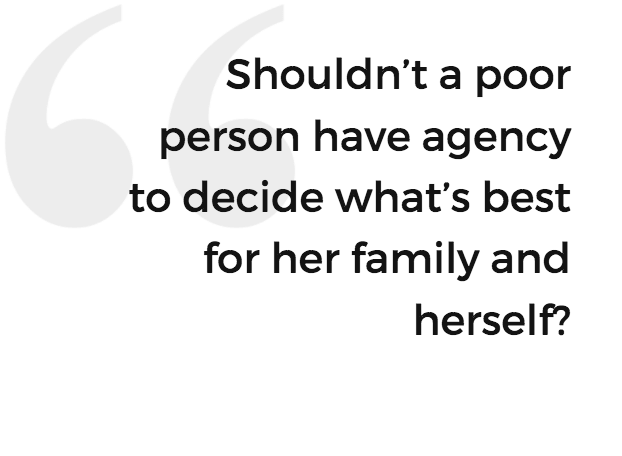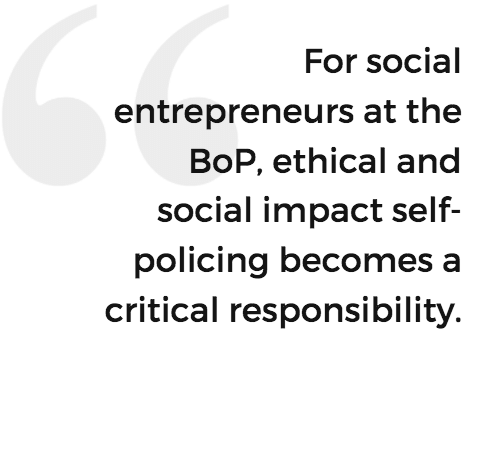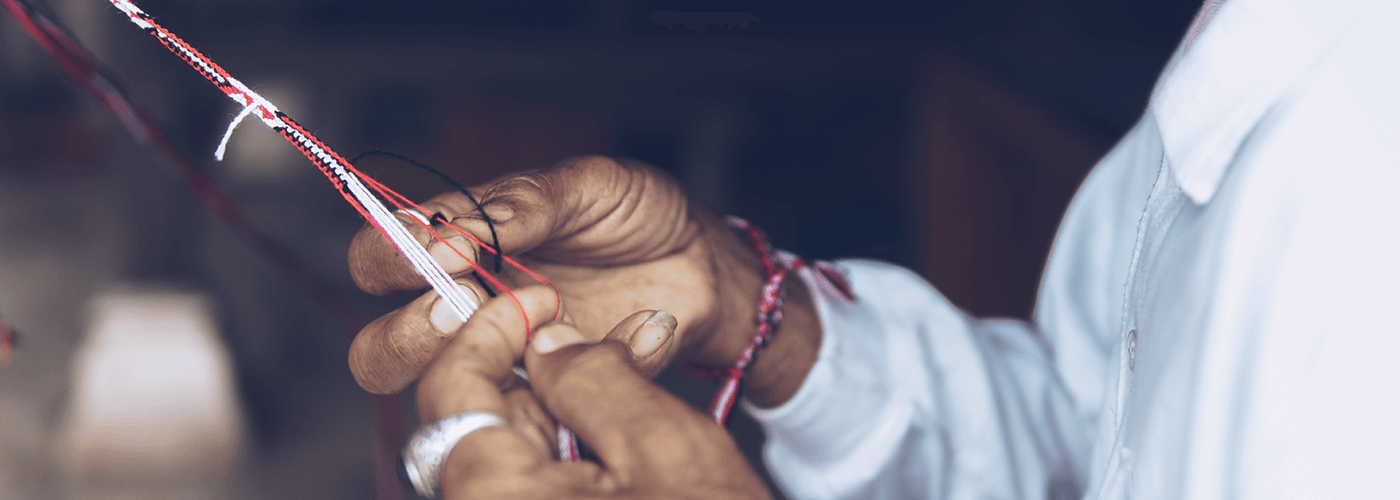SELLING GOODS AND SERVICES IN THE DEVELOPING WORLD
The following is the first of a three-part excerpt from one chapter in The Unfinished Social Entrepreneur, a book that provides 21 useful essays about what it takes to build a career as an impactful entrepreneur, plus additional commentaries from several entrepreneurs.
 or some pioneering social entrepreneurs, consumer demand in the developing world is a potential ‘fortune at the bottom of the pyramid’, as coined by management professor C.K. Prahalad in 2006. Since that time, the handy acronym ‘BoP’ has come to describe those millions of low-income consumers around the world who buy goods and services, frequently in small amounts. Some of these are basic necessities (such as soap or medicine); some are productivity improvements (think: water carriers or agricultural tools); some are lifestyle-enhancing (for instance, beauty products or soft drinks).
or some pioneering social entrepreneurs, consumer demand in the developing world is a potential ‘fortune at the bottom of the pyramid’, as coined by management professor C.K. Prahalad in 2006. Since that time, the handy acronym ‘BoP’ has come to describe those millions of low-income consumers around the world who buy goods and services, frequently in small amounts. Some of these are basic necessities (such as soap or medicine); some are productivity improvements (think: water carriers or agricultural tools); some are lifestyle-enhancing (for instance, beauty products or soft drinks).
From field experience, we now know that product re-engineering and repackaging (plus marketing and distribution innovations) are required to access the BoP marketplace. In 2014, Erik Simanis (Managing Director of Market Creation Strategies) reported in ‘The Rise and Fall of BoP Ventures’ that “while many initial BoP pilot projects offered compelling…evidence of positive community impact, rarely could they show a realistic path to profitability – particularly within the investment time-frames expected by corporations. Consequently, a number of corporations are turning away from BoP investments. And those that do move forward typically do so as corporate social responsibility or philanthropic projects, without the expectation of competitive returns.”

That’s disappointing, but plausible because all businesses (especially multinational corporations) have many competing uses for capital. In other words, a BoP product might be profitable, but not profitable enough to compete with other divisions within a company.
Nevertheless, the dream that large multinationals might unlock the BoP market (and become a force for good within the world) remains seductive to social entrepreneurs. We cling to this hope for two reasons. First, whether our social enterprise is organized as a for-profit or a nonprofit, the social entrepreneurial modus operandi resonates with leveraging marketplace forces as a listening platform for staying in close communication with clients, customers and communities. Second, many of our social ventures are starved for expansion capital and senior managerial talent. Thus, Paul Polak and Mal Warwick in Business Solutions to Poverty proselytize that “a virtually untapped market numbering 2.7 billion potential customers is simply too big to overlook. The emerging economies of the Global South, not even counting China and Russia, collectively generated $12 trillion, or nearly 1/5 (18 per cent), of the world’s total economic output…In developing countries, more than 50 per cent of the purchasing power resides in the bottom of the pyramid segment.”

 or the social entrepreneur, a handy distinction splits economic development based on consumption from economic development based on financing in-country businesses. Setting aside that distinction for now, let’s take a peek at three BoP products and services: soft drinks, consumer catalogs, and small business loans.
or the social entrepreneur, a handy distinction splits economic development based on consumption from economic development based on financing in-country businesses. Setting aside that distinction for now, let’s take a peek at three BoP products and services: soft drinks, consumer catalogs, and small business loans.
For an example of a multinational selling to the BoP: Coca-Cola employs 68,000 people in Africa and, through its distributors, bottlers and retailers, creates work for ten times that number. It is the largest private employer on the African continent. By 2020, the company will complete a $17 billion investment in Africa – equal to the entire GDP of Botswana.
For a social venture example: consider for-profit Copia Global, the Amazon-like consumer catalog that I co-founded. In 2017, while still in its start-up R&D phase, Copia has already increased the incomes of female shopkeepers in Nairobi, Kenya by 34 percent; lowered prices for 50,000 mostly-female BoP consumers by 4-5 percent; and sold reliable, top-quality merchandise (such as school supplies, bulk animal feed, motorbikes, sewing machines, healthcare items and solar lights), that shoppers can’t readily find close to their homes or farms. Copia itself employs 100 Kenyan nationals.
For a third example: MCE Social Capital (which I founded) issues $50 million of debt capital annually to locally-run, locally-controlled nonprofit microfinance partners in 33 countries. Our ultimate business partners, and the reason we exist, are rural women at the absolute bottom of the BoP. Wherever we can, we actively promote and finance microfinance programs that are coupled with social services such as health education, women’s business training, financial literacy and gender empowerment. We also lend money to small and growing businesses. MCE is a nonprofit, but has operated in the black without any external subsidies for over ten years.

 very year in the developing world, approximately 125 million people – about 80 percent of whom are women, and most of whom live in rural areas – voluntarily borrow, and then repay, roughly $100 billion in uncollateralized microloans. For the most part, they use this money to start or expand a micro-business: making and selling empanadas; raising and slaughtering pigs or chickens; buying yarn to knit sweaters; stocking dry goods in a neighborhood store; getting a home-based beauty salon started by purchasing nail polish or hair brushes. Average loan amounts range from $200 in South Asia to nearly $3,000 in Eastern Europe.
very year in the developing world, approximately 125 million people – about 80 percent of whom are women, and most of whom live in rural areas – voluntarily borrow, and then repay, roughly $100 billion in uncollateralized microloans. For the most part, they use this money to start or expand a micro-business: making and selling empanadas; raising and slaughtering pigs or chickens; buying yarn to knit sweaters; stocking dry goods in a neighborhood store; getting a home-based beauty salon started by purchasing nail polish or hair brushes. Average loan amounts range from $200 in South Asia to nearly $3,000 in Eastern Europe.
Women in emerging markets typically reinvest an impressive 90 percent of every dollar earned in education, health and nutrition for their children. Some borrowers don’t see a net increase in spendable household income, but instead put aside a little money for a rainy day, or reduce their work hours to devote more time to their children.

Of course, each of these three enterprises has its critics. Perhaps you don’t think poor people should drink sugary beverages. Perhaps you don’t want poor people to have access to the same consumer goods that you and I routinely buy from Target, Costco, Home Depot, CVS Pharmacy or Amazon. Maybe you dislike the fact that some poor women occasionally over-borrow, or redirect their loan money to non-business purposes such as medicine for a sick uncle, or a cell phone so that a father in a faraway country (sending remittances to his family) can talk with his children.
If those are your concerns, why?
Shouldn’t a poor person have agency to decide what’s best for her family and herself? If a microloan powered her choice: good. If she wants to buy a small luxury item for her home: good. If she wants to treat her children to a Coca-Cola: good. Within the limits of her finances, why the fuck should a poor woman be denied the same consumer choices that you and I enjoy?
Here’s the deal: unlike other worthy interventions to alleviate poverty and create economic opportunity, all three of these BoP examples don’t depend on donations, grants or government funding. In other words: economic justice and job creation can occur without the need for charitable fundraising appeals, fights in Congress over foreign aid budgets or foundation grant applications. If you’ve ever worked for a nonprofit, then you know what a big advantage this is. That said, for all the blessings that business brings into our lives (employment, technology, entertainment, telecommunications, life-saving medicine and, of course, hot dogs) profit as a prime motivator for social good is suspect. Before we succumb to the allure of building BoP companies, you and I have to decide what we think about some ethical and operational issues.
1. Advocates of profit-spangled opportunities at the BoP typically glide past the fact that a global market doesn’t actually exist. As Vijay Mahajan and Kamini Banga point out in The 86 Percent Solution, “there is no Chinese market. There is a market in Shanghai, or in a neighborhood in Shanghai. There is no Indian market. There is a market in Mumbai or Chennai, or in their local neighborhoods. Developing countries are a collection of fragmented local markets in a country that is gathered loosely under a single flag.” The mindset matters because, as we explore later in this essay, you and I want to grow our social enterprises without sacrificing community-facing, client-focused social impact and high-quality customer service.

2. Contrary to what economic fabulists claim, even the most robust capital markets are not a panacea for allocating society’s resources efficiently, rationally or wisely. In theory, investment capital flows to its highest and best use, but ‘best’ is always defined without regard to social or environmental impact. As Confucius noted, “The superior man understands what is right; the inferior man understands what will sell.” For convincing proof, look to the very profitable slave trade, or Big Oil, or Big Banking. Or, what about the killer profits of Big Tobacco or the gun industry? What about AIG, Goldman Sachs or Enron? The Great Recession? As noted by the political economist John Maynard Keynes: “Capitalism is the extraordinary belief that the nastiest of men for the nastiest of motives will somehow work for the benefit of all.” For social entrepreneurs at the BoP, ethical and social impact self-policing becomes a critical responsibility.
3. It’s almost quaint that some American social entrepreneurs are spreading the gospel of consumer capitalism to the BoP. Mass consumerism (complete with national holidays devoted to buying, giving and returning merchandise) has yet to create either unbounded economic opportunity or economic justice in the United States. In 2015, there were 43.1 million Americans in poverty (or 13.5 per cent of the country—roughly on par with Hungary, Indonesia, Romania, Slovakia and Thailand). Are we somewhat carelessly, if not hypocritically, pushing a shabby economic growth model?
4. In developed markets, competition and creative destruction deliver improvements in product design and pricing. Survival of the economic fittest is a necessary consequence of progress: some businesses succeed, others fail. If my new app to manage your photos goes bankrupt, no one gets hurt besides my investors and me. But, where the poor live, mistakes in the marketplace are paid for by the most vulnerable — mostly women and children. If my social enterprise fails, babies may end up drinking filthy water, get sick and maybe die. Or, crops may not get to market. Or, medicine will be unaffordable. Or, girls will not get an education. Does neatly tagging the marginalized as ‘the BoP’ risk depersonalizing millions of human beings into a financial idiom that shields us from the full implications of our developing world investments (and failures)?
5. In ideal markets, prices are set by willing buyers and willing sellers. Competition lowers prices and improves products. Consumer protection and financial transparency are enforced by governmental policy and in a court of law. In contrast, where the poor live, scarcity and monopoly live side-by-side, inflicting shoddy products and predatory pricing on captive consumers. Financially-impoverished usually means legally-impoverished; by and large, the disenfranchised have neither lawyers, nor the law, on their side. Look no further than the US court system where, despite a constitutional right to due process, money buys unequal justice. Hopefully, high-minded businesses marketing to the BoP can be counted on to never exploit their monopoly power, but – on the off chance they do, as history suggests they might – who, or what, will stop them?

 s economic justice advocates, we respect the fact that businesses create jobs, but we also know that in the real-life marketplace where the poor live and shop, a miracle-making invisible hand is not writing storybook endings of economic efficiency and opportunity for all. If there is an invisible hand, it’s a hard slap to the face. The poor are burdened with a myriad of terrorizing market imperfections. Even in developed economies, we appreciate that, like E.B. White (author of Charlotte’s Web for children, and Elements of Style for college students), points out: “The trouble with the profit system has always been that it was highly unprofitable to most people.”
s economic justice advocates, we respect the fact that businesses create jobs, but we also know that in the real-life marketplace where the poor live and shop, a miracle-making invisible hand is not writing storybook endings of economic efficiency and opportunity for all. If there is an invisible hand, it’s a hard slap to the face. The poor are burdened with a myriad of terrorizing market imperfections. Even in developed economies, we appreciate that, like E.B. White (author of Charlotte’s Web for children, and Elements of Style for college students), points out: “The trouble with the profit system has always been that it was highly unprofitable to most people.”
People living on the unpleasant edge of economic life have the same requirements for food, clothing and shelter, and the same human wants and weaknesses, as you and I do. The obvious difference is the poor live in a complex, high-consequences world of competing and unmet basic needs, few choices and many hardships. As Michael Holman reports in Last Orders at Harrods: An African Tale, a life lived in poverty is “fragile, cheap, dangerous and unpredictable.”
The urgent question for us is this: what are you and I going to do about it? Every platform for change has its merits and demerits. Our common sense tells us that no single program, by itself, solves poverty – let alone creates economic justice. If one option is undesirable (or unworkable), what are the realistic, actionable alternatives? If someone suggests that one of our BoP social ventures is harmful or inadequate, we might want to ask: compared to what?




